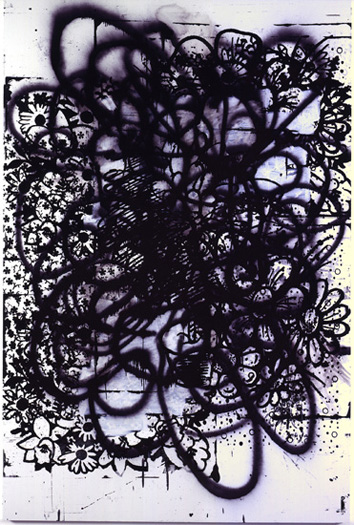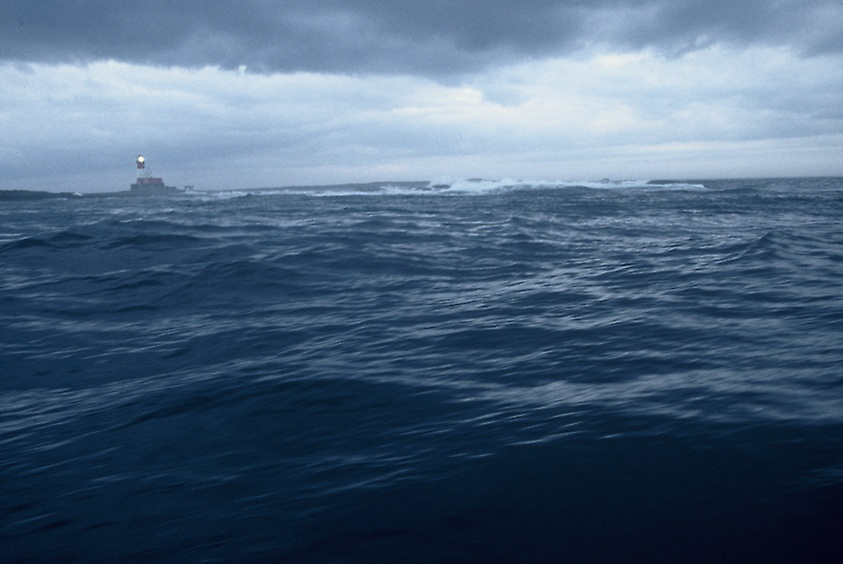Beginning in the late 1990s, Tacita Dean has produced numerous drawings and photographs, extensive writings about her work, and, most impressively, over thirty films. These works are often low-tech and employ highly economical means of shooting, such as a fixed camera, limited angles, or slow pans. Although many of her films are based loosely on a fictional or historical tale, the artist’s real power lies not in storytelling but in her adeptness with the medium of film itself. Her narratives are deeply rooted in film’s relationship to light and time, and to the reflexive and circuitous nature of both these elements.
Disappearance at Sea II (Voyage de Guérison) is the title of a short film made after Disappearance at Sea (CinemaScope) (1996). Both works take as their point of departure the story of Donald Crowhurst, an amateur yachtsman from England who joined the solo, round-the-world Sunday Times Golden Globe Race in 1968. The inexperienced (and, some might say, deceptive) Crowhurst quickly ran into difficulties, and eventually his craft, the Teignmouth Electron, was found several hundred miles from the coast of Britain, abandoned.1 Filmed in panoramic format in northeast England, Disappearance at Sea (CinemaScope) uses the lights of Berwick Lighthouse and the surrounding landscape to suggestive narrative ends.
The title of Disappearance at Sea II (Voyage de Guérison) refers to the medieval legend of Tristan and Isolde’s misguided, love-potion-induced affair. Tristan, unlike Crowhurst, embraced the ocean’s power: after being mortally wounded, he allowed himself to drift in a voyage de guérison, or journey of healing, to a magical island where he hoped to be cured once again by the powers of Isolde and her mother, the queen. Dean set the film at the Longstone Lighthouse in the Farne Islands, mounting the camera on the building’s lighting apparatus. Using a wide-screen format, she confined her exploration to a single continuous shot. The uninterrupted rotation captures the reflections in the building’s curved windows and an endless pan of the surrounding sea and sky. The implied narrative is one of silent, ceaseless waiting for a loved one to return from the sea; during exhibition, sound is confined to the light’s mechanism and the rhythmic clicking of the projector, with the whirring of the film reel echoing the sound of the rotating lighthouse.
Reflecting on Dean’s oeuvre, the novelist Jeannette Winterson wrote: “The vividness of her images and the vibrancy of her soundscapes are a challenge to the desensitised, coarse world of normal experience, where bright lights, movement and noise cheat us into believing that something is happening. Tacita Dean’s slow nothingness is far more rich and strange.”2 Indeed, in this artist’s work, real and cinematic space become analogous, forming an elegant symmetry between medium and subject.3 Disappearance at Sea II, like its companion, is ultimately about the phenomenon of projection, of a beam of light being transmitted through a lens––in actuality, the essence of film.4


